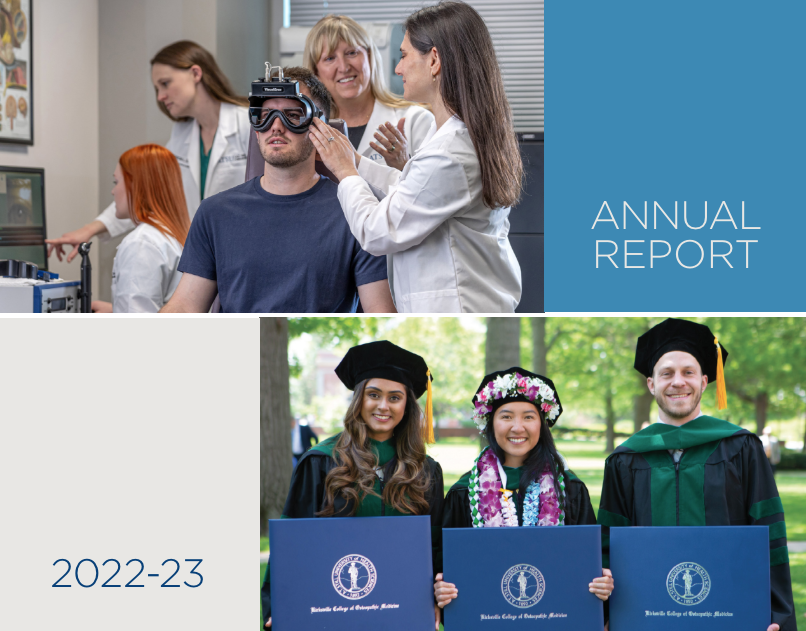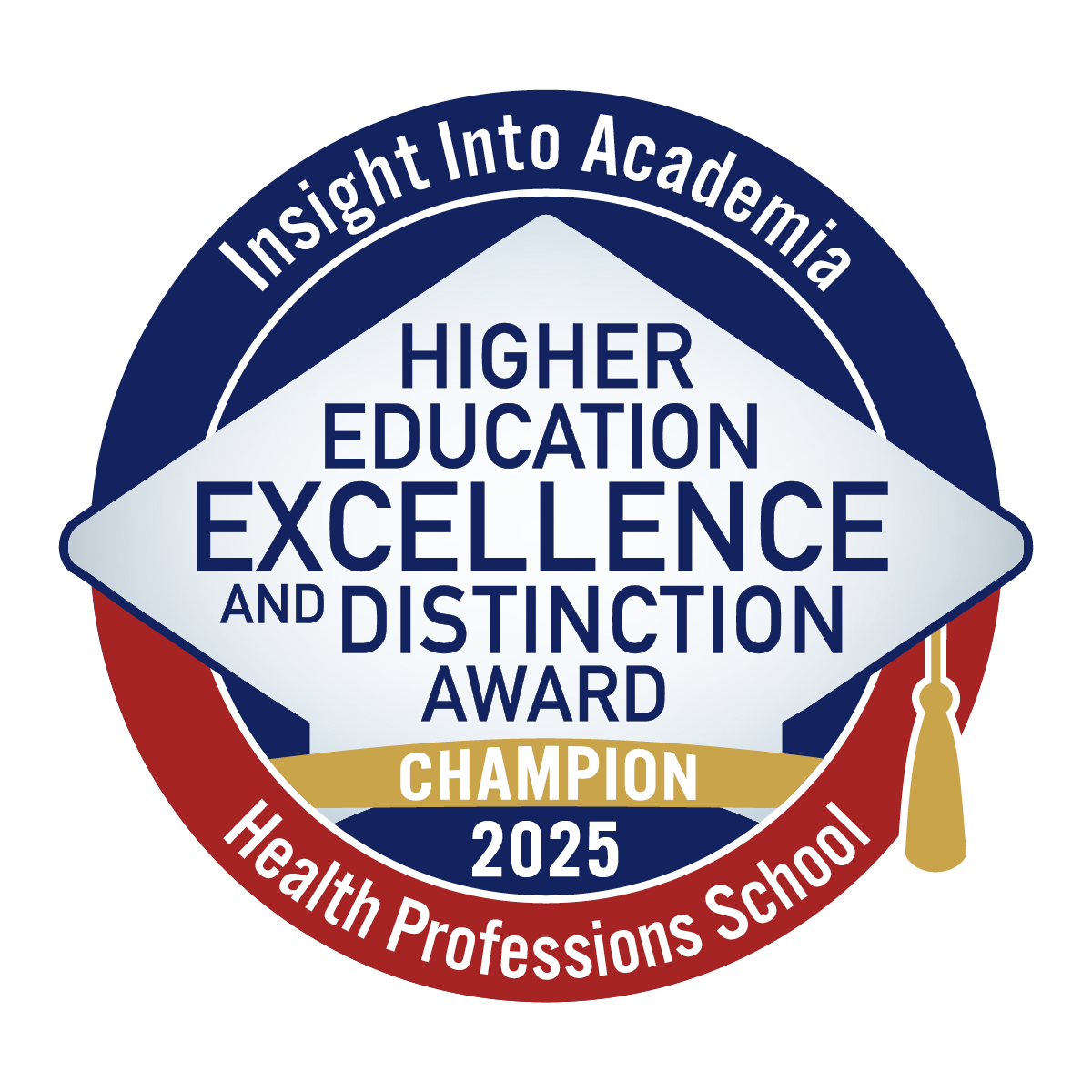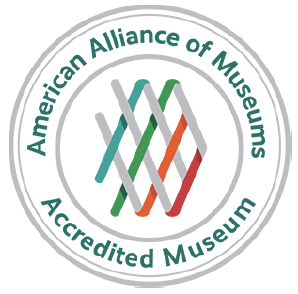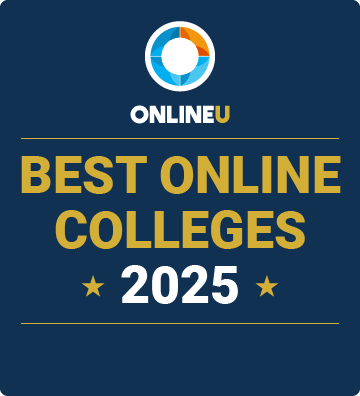About ATSU
 A.T. Still University (ATSU) of Health Sciences is the founding institution of osteopathic healthcare, established in 1892 by Andrew Taylor Still, DO. As a leading health sciences university, ATSU is comprised of three campuses (Mesa, Arizona; Santa Maria, California; and Kirksville, Missouri) on more than 200 acres with seven prestigious schools. The culturally rich learning environments include residential and online healthcare related graduate degrees as well as community-based partnerships worldwide. ATSU has more than 1,300 employees dedicated to its not-for-profit mission and an average annual enrollment of over 3,900 students from 20 countries.
A.T. Still University (ATSU) of Health Sciences is the founding institution of osteopathic healthcare, established in 1892 by Andrew Taylor Still, DO. As a leading health sciences university, ATSU is comprised of three campuses (Mesa, Arizona; Santa Maria, California; and Kirksville, Missouri) on more than 200 acres with seven prestigious schools. The culturally rich learning environments include residential and online healthcare related graduate degrees as well as community-based partnerships worldwide. ATSU has more than 1,300 employees dedicated to its not-for-profit mission and an average annual enrollment of over 3,900 students from 20 countries.
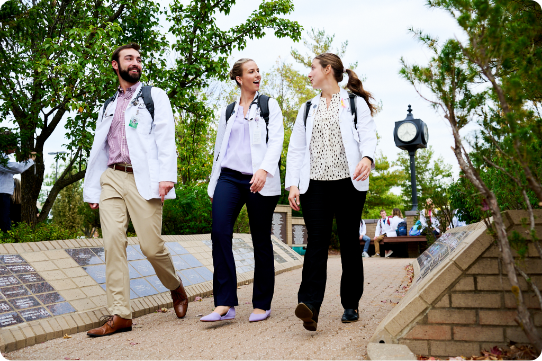
Mission
A.T. Still University of Health Sciences serves as a learning-centered university dedicated to preparing highly competent professionals through innovative academic programs. The University is committed to continuing its osteopathic heritage and focus on whole person healthcare, scholarship, community health, interprofessional education, diversity, and underserved populations.
Vision
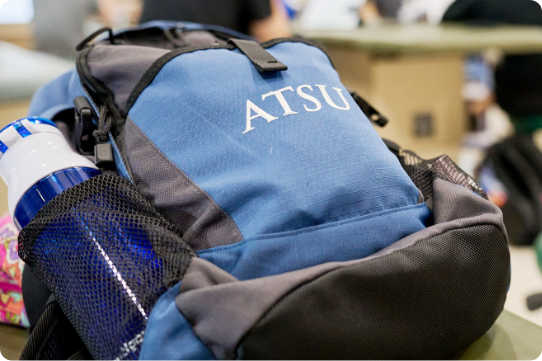
[To be] The preeminent University for the health professions
Leading innovator in health professions education
- Innovative curricular models
- Distinguished and effective faculty
- Diversity in student body, faculty, and staff
- Life-long learning
- Integrated technology into health professions education
- Full scholarship programs
Osteopathic philosophy demonstrated and integrated
- Advanced scholarship in osteopathic tenets
- Students and graduates model osteopathic tenets
- Whole person healthcare approach
Pioneering contributions to healthcare education, knowledge, and practice
Schools and colleges
ATSU has schools and colleges spread across three states. Each has a unique osteopathic focus that includes whole person healthcare and serving the underserved.
Arizona School of Dentistry & Oral Health
Arizona School of Health Sciences
College of Graduate Health Studies
College for Healthy Communities
Arizona School of Dentistry & Oral Health
A.T. Still University’s Arizona School of Dentistry & Oral Health (ATSU-ASDOH) aspires to be a leader in transforming dental education to improve the health of all communities through service, integrative whole person care and scientific inquiry.
Programs offered by ATSU-ASDOH:
Arizona School of Health Sciences
The mission of A.T. Still University’s Arizona School of Health Sciences (ATSU-ASHS) is to graduate health professionals highly skilled in evidence-based practice who are committed to reducing health disparities for individuals and communities.
Programs offered by ATSU-ASHS:
- Doctor of Athletic Training (DAT)
- Doctor of Audiology (AuD), Residential
- Doctor of Medical Science (DMSc), Online
- Doctor of Occupational Therapy (OTD), Residential
- Doctor of Physical Therapy (DPT), Residential
- Post-Professional Doctor of Audiology (AuD), Online
- Post-Professional Doctor of Audiology (AuD), Online (Non-Degree)
- Postprofessional Doctor of Physical Therapy (DPT), Online
- Postprofessional Doctor of Physical Therapy (DPT), Online (Non-Degree)
- Master of Science in Athletic Training (MSAT), Online
- Master of Science in Biomedical Sciences (MSBMS), Online
- Master of Science in Occupational Therapy (MSOT), Residential
- Master of Science in Physician Assistant Studies (MSPAS), Residential
- Master of Science in Speech-Language Pathology
- Certificate in Athletic Training Education (AT), Online
- Certificate in Clinical Decision-Making (AT), Online
- Certificate in Education (PA), Online
- Certificate in Leadership (PA), Online
- Certificate in Orthopaedics (AT), Online
- Certificate in Rehabilitation (AT), Online
- Certificate in Sport Neurology and Concussion (AT), Online
- Neurologic Physical Therapy Residency (Non-degree)
- Orthopedic Physical Therapy Residency (Non-degree)
College of Graduate Health Studies
A.T. Still University’s College of Graduate Health Studies (ATSU-CGHS) online doctoral and master’s programs offer working professionals flexibility and up-to-date industry knowledge, preparing them to address evolving health needs and gain practical experience.
Programs offered by ATSU-CGHS:
- Doctor of Education (EdD), Online
- Doctor of Health Administration (DHA), Online
- Doctor of Health Sciences (DHSc), Online
- Doctor of Nursing Practice (DNP), Online
- Master of Education in Health Professions, Online
- Master of Health Administration (MHA), Online
- Master of Health Sciences (MHSc), Online
- Master of Public Health (MPH), Online
- Master of Public Health, Dental Emphasis (MPH), Online
- Master of Public Health, Dental Emphasis with Dental Public Health Residency (MPH), Online
- Master of Science in Kinesiology (KINE), Online
- Certificate in Adaptive Sports (KINE), Online
- Certificate in Corrective Exercise & Orthopedic Rehabilitation (KINE), Online
- Certificate in Exercise and Sport Psychology (KINE), Online
- Certificate in Functional fitness for Older Adults (KINE), Online
- Certificate in Global Health (MPH), Online
- Certificate in Public Health, Emergency Preparedness & Disaster Response (MPH), Online
- Certificate in Public Health Workforce Preparedness (MPH), Online
- Certificate in Fundamentals of Education, Online
- Certificate in Health Administration for Community Health Center Leaders, Online
- Certificate in Health Professions Education, Online
- Certificate in Leadership and Organizational Behavior, Online
- Certificate in Nurse Education (DNP), Online
College for Healthy Communities
A.T. Still University’s College for Healthy Communities (ATSU-CHC) educates culturally-humble, diverse physician assistants (PAs) to serve the primary care needs of medically underserved communities.
Programs offered by ATSU-CHC:
Kirksville College of Osteopathic Medicine
Missouri School of Dentistry & Oral Health
School of Osteopathic Medicine in Arizona
Kirksville College of Osteopathic Medicine
A.T. Still University’s Kirksville College of Osteopathic Medicine (ATSU-KCOM) is committed to providing a quality osteopathic medical education in a research environment that prepares students for graduate medical training and clinical service.
Programs offered by ATSU-KCOM:
Missouri School of Dentistry & Oral Health
A.T. Still University’s Missouri School of Dentistry & Oral Health (ATSU-MOSDOH) is an innovative and socially responsible institution that is committed to whole person health, advancement of educational excellence, scholarship, community service, diversity, inclusion, leadership, and technology.
Programs offered by ATSU-MSDOH:
School of Osteopathic Medicine in Arizona
A.T. Still University’s School of Osteopathic Medicine in Arizona (ATSU-SOMA) aspires to improve delivery of distinctly osteopathic healthcare to underserved populations through innovative selection, training, and placement of graduates, leading to improved well-being for the individual and community.
Programs offered by ATSU-SOMA:
The first in whole person healthcare

At ATSU, students and faculty are part of a distinguished heritage of humanistic healthcare based on an integrated approach that includes the body, mind, and spirit of each patient. All three elements work in tandem to provide a more thorough and highly personalized healthcare delivery model that promotes wellness and meets the health needs of each patient. This approach distinguishes ATSU for innovation in post-graduate healthcare education. Graduates become compassionate leaders proposing global health solutions and meeting unmet community health needs.
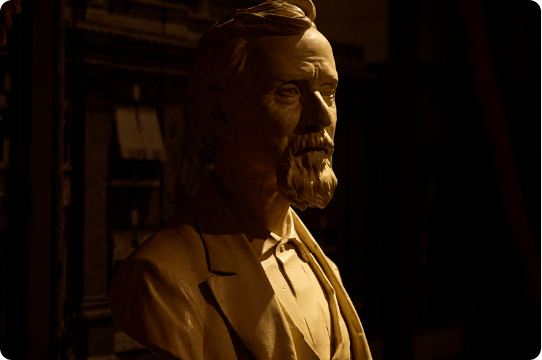
“To find health should be the object of the doctor; anyone can find disease.”
– Andrew Taylor Still, DO
What is osteopathic medicine?
Osteopathic medicine is a unique form of American medical care that was developed in 1874 by Andrew Taylor Still, DO, founder and namesake of A.T. Still University (ATSU), the world’s first osteopathic medical school. Dissatisfied with 19th century healthcare, Dr. Still founded a philosophy of medicine based on ideas that date back to Hippocrates, the Father of Medicine, and which focuses on the unity of the body. Dr. Still pioneered the concept of wellness and identified the musculoskeletal system as a key element of health. Osteopathic physicians take a whole person approach to caring for patients. Instead of treating specific symptoms or illnesses, they regard the body as an integrated whole.
“Over the past few years, osteopathic medicine’s traditional principles and practices (especially those focused on patient-centered, preventive care) have been heralded as central features of the kind of health care system that reform efforts aim to implement,” states Stephen C. Shannon, DO, MPH, President, American Association of Colleges of Osteopathic Medicine. “In other words, osteopathic medical schools are educating the kind of physicians this country needs, and that fact is being increasingly recognized throughout the nation.”
Osteopathic medicine in practice

Today, osteopathic physicians and allied health professionals are one of the fastest growing segments of healthcare providers. They are on the cutting-edge of modern medicine, able to combine technology with compassion and their holistic approach to treating the body, mind, and spirit that provides thorough care for each patient.
Osteopathic physicians can choose any specialty, prescribe drugs, perform surgeries, and practice medicine anywhere in the United States. DOs must complete the same amount of schooling and meet the same licensing requirements as MDs, with approximately 200 additional hours of training in osteopathic manipulative medicine.
DOs are prominent in both primary care and specialty areas of medicine, including family medicine, internal medicine, pediatrics, obstetrics and gynecology, neurosurgery, cardiology, radiology, dermatology, and neuromusculoskeletal medicine. At ATSU, they have a passion to give back and meet unmet community healthcare needs in underserved and rural settings. Students become among the most dedicated physicians and allied health professionals, the wisest of mentors, and the most enthusiastic leaders who are inspired to change the future of medicine.
Osteopathic medicine facts
- Andrew Taylor Still, DO, founded the tenets of osteopathic medicine in 1874.
- Kirksville, Mo., is known as the home of osteopathic medicine and the world’s first osteopathic medical school established by Dr. Still in 1892.
- A.T. Still University is a private, not-for-profit University focused on integrating the tenets of osteopathic medicine with advancing knowledge of today’s science.
- In 1897, Dr. Still’s students organized to form the American Association for the Advancement of Osteopathy, or the American Osteopathic Association as it is known today.
- The U.S. Department of Health, Education, and Welfare recognized the AOA as the accrediting body for osteopathic medical education in 1952. In 1967, the AOA was recognized by the National Commission on Accrediting (now the Council for Higher Education Accreditation) as the accrediting agency for all facets of osteopathic medical education in the United States.
- Federal recognition had a profound effect on osteopathic medicine, spurring a second generation of schools and a dramatic increase in the number of osteopathic physicians. The big shift came in the move to state-supported schools, starting with Michigan State University College of Osteopathic Medicine in East Lansing, which graduated its first class in 1973.
- Osteopathic manipulative medicine (OMM) has been used to treat a variety of problems such as ear infections, sinus problems, colic in infants, and many adult maladies. It has had a success rate high enough to convince many MDs to take classes in OMM.
- More than 20 percent of U.S. medical students are enrolled in osteopathic medical schools.
- Approximately 78,000 DOs practice in the United States, handling more than 10 percent of all office visits in rural areas and eight percent in urban areas. DOs have a strong history of serving rural and underserved areas, often providing their unique brand of compassionate, patient-centered care to some of the most economically disadvantaged members of society.
- By 2020, the number of osteopathic physicians will top 100,000, say expert predictions, according to the American Medical Association. This is good news, as the need for more osteopathic physicians delivering compassionate, comprehensive healthcare continues to rise throughout the nation and around the world.
- AOA’s Commission on Osteopathic College Accreditation accredits 29 colleges of osteopathic medicine in 37 locations.
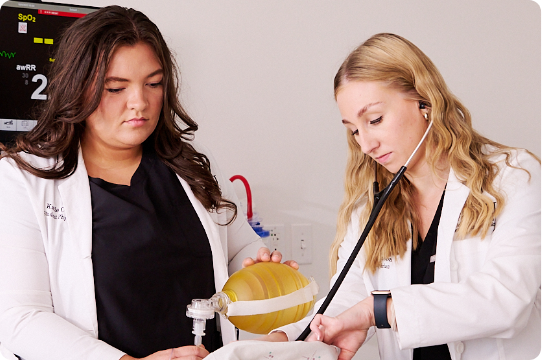
- The body is a unit; the person is a unit of body, mind, and spirit
- The body is capable of self-regulation, self-healing, and health maintenance Structure and function are reciprocally related; and
- Rational treatment is based upon an understanding of the basic principles of body unity,self-regulation, and the interrelationship of structure and function.
[The American Osteopathic Association’s House of Delegates approved the Tenets of Osteopathic Medicine as policy which follows the underlying philosophy of osteopathic medicine.]
Application of these tenets in whole person healthcare*

Principles of evidence-based medicine
A.T. Still University’s (ATSU) integrated learning platform includes the principles of evidence-based medicine (EBM) alongside ATSU’s founding tenets of whole person healthcare. Students learn not only in the classroom but also in actual practice settings. The elements of evidence-based medicine may be applied to any patient treatment-oriented practice field, allowing medical and healthcare workers to provide each patient with current treatment options based on the latest, most clinically relevant research including clinical trial results.
Evidence-based medicine is defined as “the conscientious, explicit, and judicious use of current best evidence in making decisions about the care of individual patients, and the practice of evidence-based medicine means integrating individual clinical expertise with the best available external clinical evidence from systematic research” according to David L. Sackett, pioneer of evidence-based medicine, and his colleagues.
Because EBM is also used in other healthcare fields, including dentistry, nursing and psychology, the healthcare industry is embracing a more universal term: evidence-based practice.

The need for evidence-based medicine
Studies suggest our need for best evidence occurs twice in every three outpatient visits and up to five times per inpatient visit. The amount of new medical information formed daily is overwhelming. It is impossible to know everything. With this rapid formation of data, familiar sources such as textbooks are out of date by the time they reach the shelf. The development of online EBM tools and journals containing pre-analyzed articles help individual providers keep current.
Most importantly, practicing evidence-based medicine leads to improved patient outcomes and offers the surest and most objective way to determine and maintain consistently high quality and safety.
Myths about evidence-based medicine
Evidence-based medicine is not a new concept. The term evidence-based medicine was coined in 1992 by a group at McMaster University, but clinicians have always used evidence to make decisions about patient care. The evidence just may not have been the “best” evidence due to any number of reasons.

Some fear that EBM is an example of cookbook medicine, a way to cut costs of healthcare, or a way to keep patients from receiving the care they deserve. None of these fears is true. There will never be one recipe that fits all patients, and as stated clearly in the definitions above, EBM involves integration of clinical expertise and individual patient values. In some cases, the results of EBM may cut costs by eliminating unnecessary procedures or treatments; however there also may be situations where it is the expensive procedure or treatment that provides the best results for patients. Along that same line, practicing EBM is a way to eliminate unnecessary expenditure which, in theory, would allow more money to decrease the treatment and diagnostic disparities present in today’s society.
Many may agree with the concept of EBM but are unsure that it can be practiced in a busy clinic. In reality, it is those busy clinicians who may benefit the most from the growth of EBM. As the search engines become quicker and the number of secondary sources grows, it will be easier than ever to find the answer to a clinical question that arises from a 15-minute office visit.

